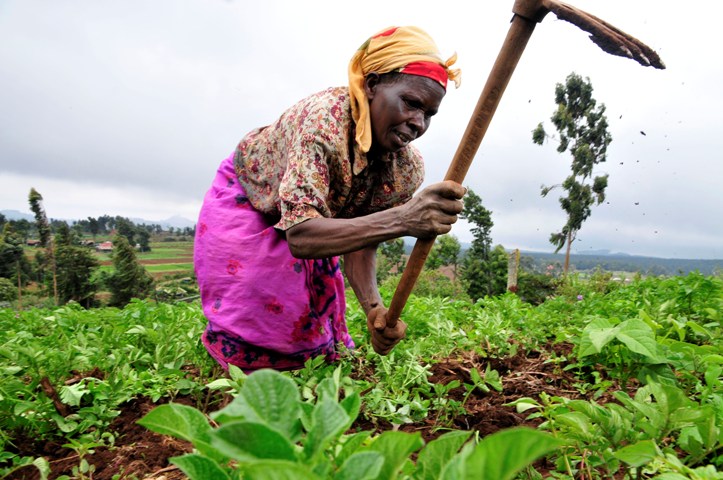Zimbabwe’s Rural Revolution: Solar, Satellites and Digital Tools Transform Farming
Zimbabwe’s success lies in its integrated approach — combining renewable energy, digital tools, modern finance, and food safety into one cohesive strategy.

In the dry, sun-scorched plains of rural Zimbabwe, where riverbeds once signaled the end of each farming season, an agricultural transformation is taking root. Armed with solar-powered irrigation systems, satellite data, and digital tools, smallholder farmers are defying drought, revitalizing local economies, and charting a sustainable path toward food security.
This sweeping change is being driven by a coalition of partners — the Government of Zimbabwe, the European Union (EU), the Fleming Fund, the African Development Bank (AfDB), the AFC Land and Development Bank, and the Food and Agriculture Organization of the United Nations (FAO) — who are combining science, technology, and indigenous wisdom to reshape the country's agrifood systems.
Unlocking Water: Reviving Dry Riverbeds into Lifelines
For generations, Zimbabwe's semi-arid regions were defined by seasonal agriculture, where unreliable rainfall and parched dams limited farmers to a single harvest each year. Now, solar-powered irrigation systems and sand-abstraction technology, supported by the EU, are unlocking hidden aquifers beneath dry riverbeds, turning barren landscapes into fertile, green oases.
The technology harnesses solar energy to pump water trapped beneath river sands, providing a sustainable and cost-effective alternative to diesel-powered systems. These innovations reduce labor, cut energy costs, conserve water, and dramatically increase crop yields.
"We used to watch our dam dry up every year. Now, we grow crops all year round," said David Ndou, Chairperson of the Sivuli Irrigation Scheme.
By integrating traditional water knowledge with modern engineering, communities are not only adapting to climate change but also commercializing agriculture — proving that local innovation can drive resilience and prosperity.
Digital Villages: Bridging the Rural Divide
Beyond irrigation, Zimbabwe's farmers are connecting to the digital future through FAO's Digital Villages Initiative. The program is transforming remote communities into smart agricultural hubs, equipped with access to digital identities, geo-referenced advisory tools, market information systems, and AI-driven crop analytics.
More than 5,000 farmers — most of them women — have already been trained in digital literacy, enabling them to use mobile platforms for market access, price comparisons, and climate information.
"We are seeing women buying smartphones because they now see direct value through better extension support and market access," said lead farmer Sheyi Kahushe.
This digital empowerment is narrowing gender and rural divides while propelling inclusive economic growth.
Satellite-Powered Insights: Precision Agriculture in Real Time
The Earth Observation for Agricultural Statistics (EOSTAT) initiative, led by FAO, is giving Zimbabwe an unprecedented ability to track agricultural trends from space. Using satellite imagery, EOSTAT generates high-accuracy (over 80%) crop and yield estimates, helping the government plan better for droughts, floods, and pest outbreaks.
It also strengthens early warning systems, allowing for rapid responses to threats that could jeopardize national food security.
"EOSTAT is modernizing agricultural monitoring through digital innovation and driving Zimbabwe's shift toward data-driven, climate-smart agriculture," said Hillary Mugiyo, Early Warning Specialist at the Ministry of Agricultural and Rural Development Advisory Services.
The initiative is building a new generation of data scientists and geospatial experts through partnerships with the Zimbabwe Space Agency, the National University of Science and Technology, and other academic institutions.
Financing Resilience: Modernizing Agricultural Credit
Access to finance remains a major barrier for smallholder farmers, but digital innovation is changing that. In partnership with AfDB and the AFC Land and Development Bank, FAO has introduced digital loan management systems to make agricultural financing more transparent and efficient.
The AFC's e-voucher platform now enables farmers to redeem agricultural inputs from approved suppliers while tracking disbursements and repayments in real time. This system minimizes bureaucracy, reduces corruption, and ensures that funds reach intended beneficiaries quickly.
Through this digital financial ecosystem, Zimbabwe has achieved impressive results:
-
17,000 hectares of winter wheat cultivated
-
72,000 hectares of maize planted under the Seed Revolving Fund
These milestones mark a major leap toward national wheat self-sufficiency and greater food security.
Safer Food Systems: Battling Antimicrobial Resistance
Zimbabwe is also taking decisive steps to strengthen food safety and combat antimicrobial resistance (AMR) in livestock production. Supported by the Fleming Fund and the AMR Multi-Partner Trust Fund, FAO has helped rehabilitate 14 sentinel laboratories across the country.
These upgraded labs now generate real-time data on resistant bacteria, enabling faster outbreak detection and guiding national health policies. Meanwhile, farmers are being trained in biosecurity, hygiene, and responsible antibiotic use, reducing dependence on antimicrobials.
This initiative reinforces the One Health approach — connecting human, animal, and environmental health to build a safer, more resilient agrifood system.
Innovation in Action: Partnerships for Impact
"Innovation is more than an idea — it is action and collaboration that deliver impact," said Tendai Munyokoveri, Assistant FAO Representative for Programmes.
"In Zimbabwe, we are showcasing solutions that work, partnerships that deliver, and ideas that grow into meaningful change."
Zimbabwe's success lies in its integrated approach — combining renewable energy, digital tools, modern finance, and food safety into one cohesive strategy. The country is demonstrating that innovation, when rooted in local knowledge and supported by global partnerships, can transform livelihoods and landscapes alike.
A Model for Africa's Agricultural Future
With continued investment, public–private partnerships, and community-driven leadership, Zimbabwe's experience is offering a replicable model for climate-smart, digitally enabled agriculture across Africa.
From solar panels glinting on the horizon to satellites orbiting above, every layer of this transformation tells a story of resilience, adaptation, and hope — where technology empowers people, and the land once again yields promise.
ALSO READ
-
High Tensions: Arrests at Europa League Clash Amid Protests
-
India and EU Edge Closer to Finalising Free Trade Agreement
-
Greece and U.S. Ink Landmark LNG Deal to Transform European Energy Landscape
-
South Africa, FAO Develop STI Roadmap to Transform Agriculture and Food Systems
-
Britain and EU Lift Sanctions on Syria Ahead of Sharaa-Trump Meeting









